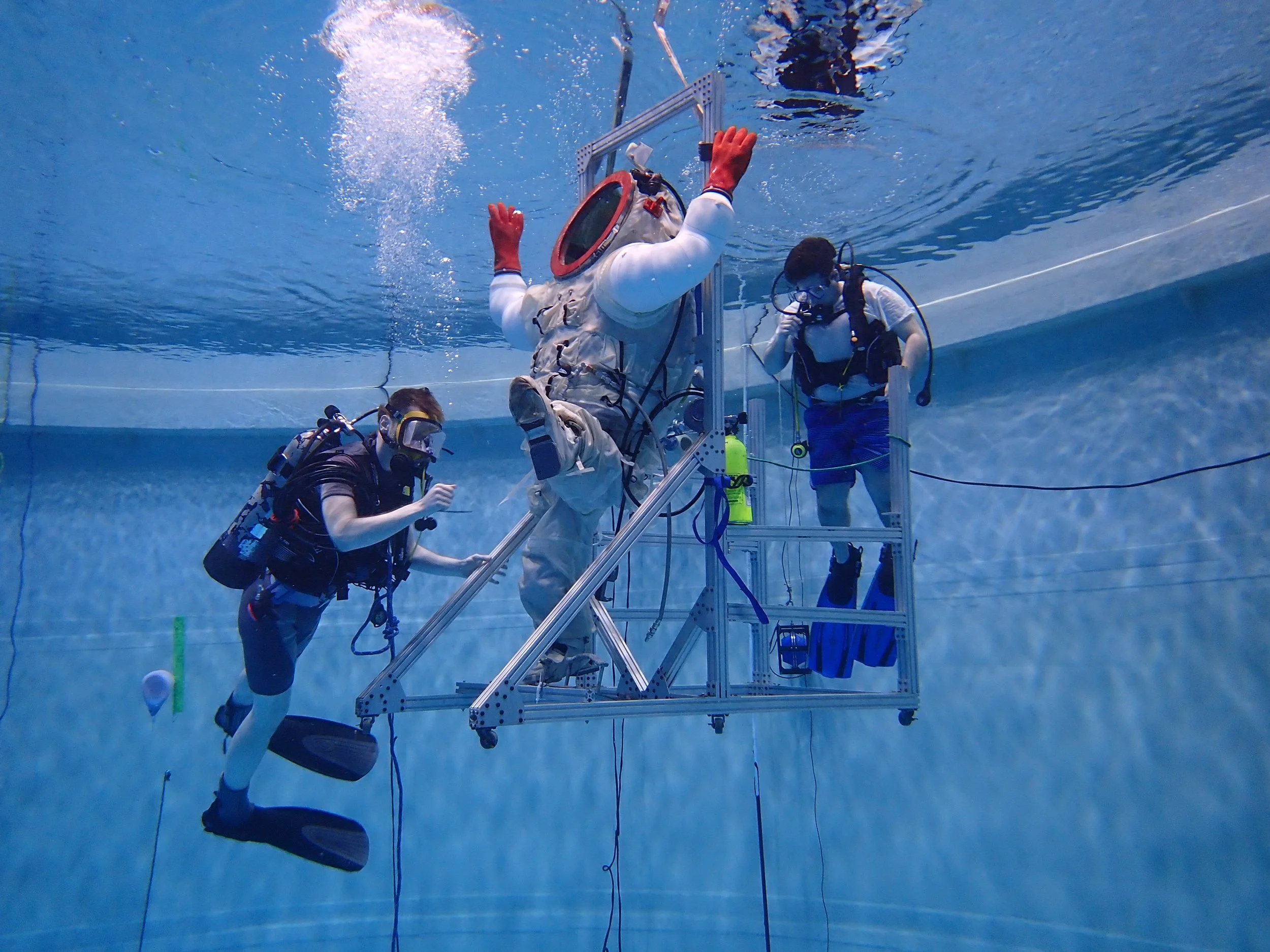
Underwater Human Factors
Sometimes we test habitats, staircases, spacesuits, and more underwater to get that tricky human data
The SSL is best known for being the only neutral buoyancy facility in the world on a university campus, and with that comes some pretty amazing opportunity to engage in new, innovative underwater simulations for both human- and robotics-focused research! Ranger is the lab’s most notable underwater robotics simulation project, but a large mount of underwater time is dedicated to human-factors research in the SSL! This page showcases just a few of the underwater human-factors studies that I have been apart of in my tenure as a lead diver! With the exception of the staircase experiment shown on this page, the dives for experiments shown, each of which required multiple dives over the course of the research project, were organized, led, and briefed by myself.
All dives at the SSL require a “Deck Chief” (dive supervisor), safety diver(s), lead diver(s), and surface test directors (this was usually the senior capstone groups, or other lab members). I have led most of the experimental dive operations for the SSL since 2018 and my responsibilities in that role have included leading: coordination of personnel, safety plan creation/briefing, test plan creation/briefing, underwater crane operator, debriefs, and filter cleaning/maintenance (yes, I am still a pool boy!).
Habitation
My greatest amount of time spent underwater has likely been on habitation studies due to their nature in requiring extensive time underwater to complete their large dataset matrices. During my senior capstone project my team developed a series of 8020™ rack units that could be arranged in a variety of configurations to represent the habitable volume within a pressure vessel. The underwater simulation of these volumes was used to analyze minimum cabin sizing as a function of personnel quantity, gravitational level (micro-, lunar, and Martian), and cargo transfer within the habitat. The full analysis took over two years to complete with varying hardware improvements occurring along the way, and significant difficulties added to each dive due to Covid-19 restrictions. Publications from this study can be found here:
Rear-Entry Spacesuit Vol. Requirements
In the upcoming series of xEVAS spacesuits for the Artemis landings, the spacesuit is a rear-entry hard upper torso (HUT) type suit, not flown before! There are theoretical volumetric estimations for the amount of volume required to enter and exit the suit within a confined space, and we did validation work for those estimations! Very cool entering and exiting a suit weighted to lunar gravity conditions!
Cargo Transfer
Transferring cargo both on the lunar surface and inside the habitat will be crucial for extended lunar presence on the moon and beyond. An extended research project stemmed from the habitation studies looking at both passing cargo within a habitat, as well as quantifying an upper-limit of cargo to be carried between a lander and a habitat!
Capstone Crew Bed Study
Some of the best education comes from allowing students to experience the full gamut of test planning, start to finish, even if the test doesn’t work out the best! A group of senior capstone students wanted to analyze varying crew-quarters configurations, including hammocks (like in the Lunar Modules)! We advised that it may not be the most accurate comparison underwater, but the students wanted to press on to see the results themselves and we carried out a series of dives looking at varying configurations of crew beds!
The pictures with the hammock billowing in the currents were pretty cool though even if the hammock was not very usable underwater!
Deployable Habitat Flooring
A senior capstone group wanted to create a multi-story habitat that deployed for testing underwater (similar to their lunar design) and then analyze varying completion times for outfitting a habitat with varying task configurations! The habitat floor was made from expanded PVC sheets and had trouble deploying but we made it work!
Cargo Transfer Between Floors
This was my first set of test operations as a test subject, and as a result did not lead these sets of dives. We were analyzing the best ways of translating between different levels of a multi-story habitat in different gravity levels (micro, lunar, martian, 1G control), both carrying cargo and unencumbered. A reconfigurable ladder was created to adjust the staircase angle and step distance for comfort optimization, and was compared with a ladder translation! Motion capture was used to gather biometric data.



























